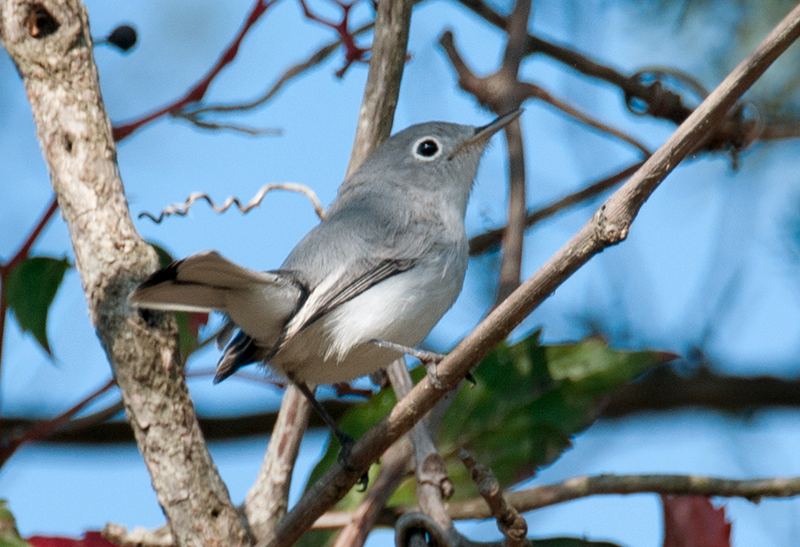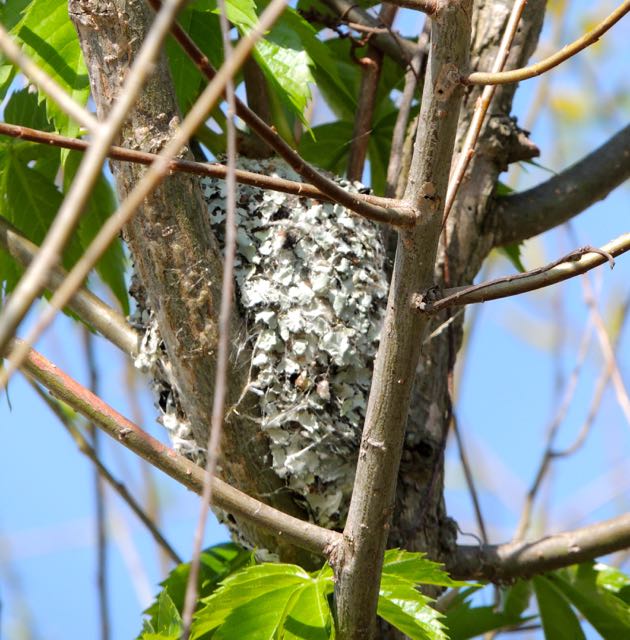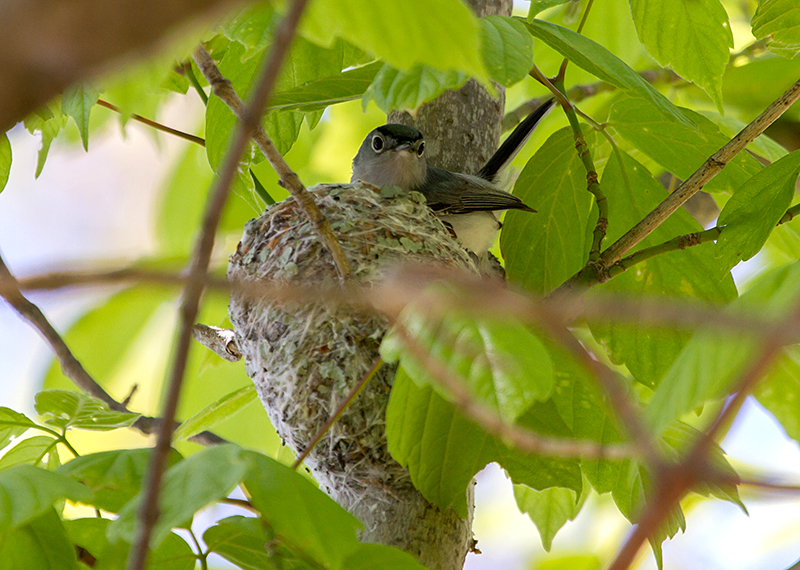| Early Spring Date: | March 29 |
| Late Spring Date: | May 30 |
| Best Dates to See in Spring: | April 11-29 |
Spring: Blue-gray Gnatcatchers are common breeding migrants in the Washington metro area, but they are not common at Monticello Park. They are one of the earliest migrants to arrive each spring, and a small number pass through Monticello in mid-April on their way to find a place to build a nest. They often nest at Huntley Meadows and other local parks.
Fall: On average, only a few Blue-gray Gnatcatchers are recorded at Monticello each year during fall migration. However, in recent years, the number of fall sightings has slightly increased.
Where to See Them in the Park
Gnatcatchers usually stay in the mid-story and below, and they can be seen anywhere in the park. Their preferred habitat is forest edges, especially near water.
Physical Description

Gnatcatchers are tiny birds who move around quickly, often in flocks with other small songbirds. They can be inquisitive and will sometimes hop on low branches close to people. The males have a bluish-gray back, white underparts, black wings, a black mark on the forehead, a white eyering, and a long black tail with white edges. The long tail, which they sometimes cock, makes them look bigger than they actually are.

Females look like males but do not have a black mark on the forehead. Most of their outer tail feathers are white.
Fall: Fall plumage is similar to spring plumage, but gnatcatchers in the fall have more white in the tail.
Vocalizations
The vocalizations of Blue-gray Gnatcatchers have a sneezy, scolding quality. Gnatcatchers frequently vocalize, which can be an aid in finding them.
Hear the vocalizations of the Blue-gray Gnatcatcher.Notes

Gnatcatcher nests are lovely small cups covered with lichens, but you are not likely to see one at Monticello. Gnatcatchers sometimes will raise a second brood during the breeding season.

Their breeding range formerly did not extend much north of the border between Maryland and Pennsylvania, but it has since expanded toward the United States border with Canada. Blue-gray Gnatcatchers eat a lot of small insects, but very few gnats. Gnat used to be a generic term for a small insect.
Origin of Names
Common Names: Blue-gray from the plumage. Gnatcatcher because they eat small insects.
Genus Name: Polioptila means gray feather.
Species Name: Caerulea means blue.
Blue-gray Gnatcatcher video footage
Return to the Index
